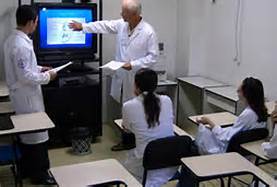
Comments? Contact IEE.
1. Objectives
- Name the five components of the one-minute preceptor model of teaching.
- Describe differences between teacher-centered and learner-centered teaching.
- Discuss ways in which the one-minute preceptor model of teaching facilitates learner- and patient-centered teaching.
2. Preparation in Advance
Reflect upon the last clinical case that was presented to you. Do you feel as if you had a good understanding of the learner’s understanding of the case and the differential diagnosis? How many diagnostic possibilities (or treatment options) did the learner name before you began suggesting possible diagnoses (or alternative treatment strategies)? Write down the diagnoses (or treatments) that were named by the learner, and the ones that you named.
3. The Module
4. Application of the Module
Recall the most recent clinical case that was presented to you. Did you ask questions that helped you gauge the learner’s level of knowledge and/or understanding of the topic? If so, name 1-3 ways in which you might ask such questions more effectively next time. If not, name 1-3 ways in which you will ask such questions in order to begin to develop a more “learner-centered” approach to teaching, as discussed in the module.
5. Next Steps and Peer Coaching
Inform a colleague that you are working to provide teaching that is more learner-centered. Provide your colleague with the five steps of the One Minute Preceptor (OMP) model of clinical teaching. (See #6 – Summary Points – below) Ask your colleague observe one of your teaching sessions and to take notes on your performance as it pertains to at least one or two of the components of the OMP model. Meet with your colleague that same day and solicit feedback.
6. Summary Points
The steps of the One Minute Preceptor (OMP) model of clinical teaching:
1. Ask the learner to commit to a diagnosis or plan.
2. Probe for evidence in support of that diagnosis or plan.
3. Teach general rules.
4. Reinforce what was done well.
5. Correct errors and offer specific suggestions for improvement.


